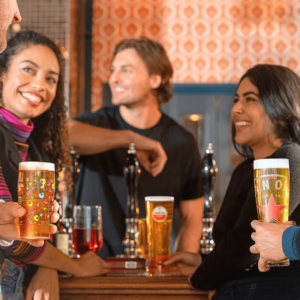Like most people in my line of work, I started last Wednesday morning cycling through news updates on my phone; eventually dragging my weary carcass out of bed to pour a cup of strong coffee, turn on the radio and begin processing Trump’s return to power.
Between updates on the electoral map, giddy tech bros and broken polling, one stoic US commentator speaking to Radio 4 from West Palm Beach summed it up: Trump won because he spoke to supporters in their own language – “not language you’d wish to overhear at a cocktail party, but language which is definitely being used in communities and homes across the nation.”
This wasn’t just about Trump’s famously simple sentences or his penchant for controversy. The strategy was calculated and effective. While Harris sought traditional celebrity endorsements and mainstream media coverage, Trump’s campaign methodically targeted younger male voters through carefully chosen podcast appearances.
While traditional slots like CBS’ 60 Minutes waited for campaign interviews that never came, Trump was spending three hours with Joe Rogan, reaching 14 million viewers who probably weren’t tuning into Meet the Press. Even when Harris’s campaign raised over a billion dollars and filled rallies with energetic supporters, they couldn’t match Trump’s laser-focused audience engagement.
The lesson here for anyone trying to tell their story is striking. Too often, we see organisations struggling to gain traction because they’re speaking the right message in the wrong places – or worse, the wrong message in the right places. It’s like trying to explain a complex idea with academic jargon when your audience needs the “explain it like I’m five” version (or vice versa).
When Harris’s team offered Rogan 45 minutes if he’d come to them, he declined. Trump, understanding the platform’s value, flew to Austin for a three-hour conversation. The lesson? Meet your audience where they are, not where you wish they were.
This means being brave enough to translate complex ideas into different forms for different audiences without losing their essence. Your story might deserve that detailed coverage in specialist publications. But if you want broader stakeholders to understand its importance, you need to tell it differently – sometimes even in language you wouldn’t wish to overhear at a cocktail party.
The media landscape continues to fragment, with audiences increasingly scattered across platforms, publications, and podcasts. The days of reaching everyone through a single channel are long gone. What works for LinkedIn users might fall flat on industry-specific forums. A message that resonates in a trade publication might need complete reconstruction for a morning radio show or podcast. But this fragmentation isn’t a barrier – it’s an opportunity to craft more targeted, effective communications.
Like it or not (and many of us don’t), Trump’s victory offers a masterclass in audience engagement. The question isn’t whether to choose between traditional and new media – it’s how to strategically use both to reach the right people with the right message at the right time.
After all, isn’t that what good communication is about? Not dumbing down your message, but smartening up your delivery.
































